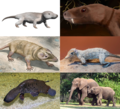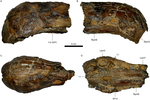 | The secondary palate is an anatomical structure that divides the nasal cavity from the oral cavity in many vertebrates. In human embryology, it refers... 3 KB (235 words) - 08:27, 1 July 2022 |
 | The development of the secondary palate commences in the sixth week of human embryonic development. It is characterised by the formation of two palatal... 4 KB (329 words) - 22:05, 4 July 2021 |
 | The soft palate is part of the palate of the mouth; the other part is the hard palate. The soft palate is distinguished from the hard palate at the front... 9 KB (907 words) - 01:39, 8 May 2024 |
 | land. In animals with secondary palates, they allow breathing when the mouth is closed. In tetrapods without secondary palates their function relates... 6 KB (609 words) - 23:18, 12 December 2023 |
 | Evolution of mammals (section Bony secondary palate) the evolution of the middle ear bones, erect limb posture, a bony secondary palate, fur, hair, and warm-bloodedness.[citation needed] While living mammal... 141 KB (15,252 words) - 16:07, 26 April 2024 |
 | reptiles lack a secondary palate, meaning that they must hold their breath while swallowing. Crocodilians have evolved a bony secondary palate that allows... 137 KB (14,654 words) - 08:56, 9 May 2024 |
 | maxilla appears to have housed sinuses. Baryonyx had a rudimentary secondary palate, similar to crocodiles but unlike most theropod dinosaurs. A rugose... 95 KB (10,925 words) - 11:44, 25 April 2024 |
 | Scymnosaurus (section Palate) said that Scymnosaurs were likely not endothermic for the lack of a secondary palate. The higher metabolic load associated with endothermy is associated... 12 KB (1,347 words) - 03:20, 22 December 2023 |
 | in the midline of the skull over a long distance, forming a closed secondary palate that stiffened the snout, and setting off the internal nostrils and... 43 KB (4,546 words) - 17:08, 25 April 2024 |
maniraptoriform coelurosaurs, the secondary palate was bony and termed an osseous secondary palate. In contrast, a soft secondary palate was inferred for some other... 158 KB (16,339 words) - 15:38, 13 February 2024 |
perhaps hares), the lack of kinesis is most likely to be related to the secondary palate, which prevents relative movement. This in turn is a consequence of... 19 KB (2,452 words) - 19:19, 5 February 2024 |
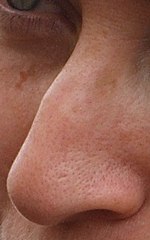 | palatine shelves that form the secondary palate. The secondary palate will endochondrally ossify to form the hard palate - the end-stage floor of the nasal... 78 KB (9,094 words) - 01:42, 8 May 2024 |
 | not in most theropod dinosaurs. Oxalaia had a particularly elaborate secondary palate, while most spinosaurs had smoother ones. The teeth of spinosaurids... 104 KB (9,658 words) - 21:00, 2 May 2024 |
 | their gait was semi-erect and later forms had evolved a secondary palate. A secondary palate enables the animal to eat and breathe at the same time and... 87 KB (3,515 words) - 21:54, 29 April 2024 |
 | that they had long, flexible tongues. They also had a large, side secondary palate. This means that they could breathe while chewing, unlike crocodiles... 21 KB (1,821 words) - 06:03, 7 April 2024 |
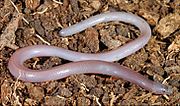 | skinks include the absence of a parietal foramen, a well developed secondary palate formed by three different bones, the maxillae, vomers and palatines... 23 KB (2,469 words) - 16:55, 6 April 2024 |
 | to the mammalian phalangeal formula. The presence of an incipient secondary palate in advanced therocephalians is another feature shared with mammals... 31 KB (2,981 words) - 03:51, 4 April 2024 |
 | 047 lbf) to 102,803 N (10,483 kgf; 23,111 lbf). Deinosuchus had a secondary bony palate, which would have permitted it to breathe through its nostrils while... 37 KB (4,043 words) - 11:37, 2 May 2024 |
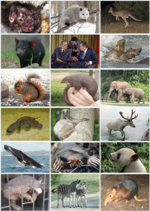 | Those stages were characterized by: The gradual development of a bony secondary palate. Abrupt acquisition of endothermy among Mammaliamorpha, thus prior... 212 KB (22,687 words) - 18:38, 9 May 2024 |


